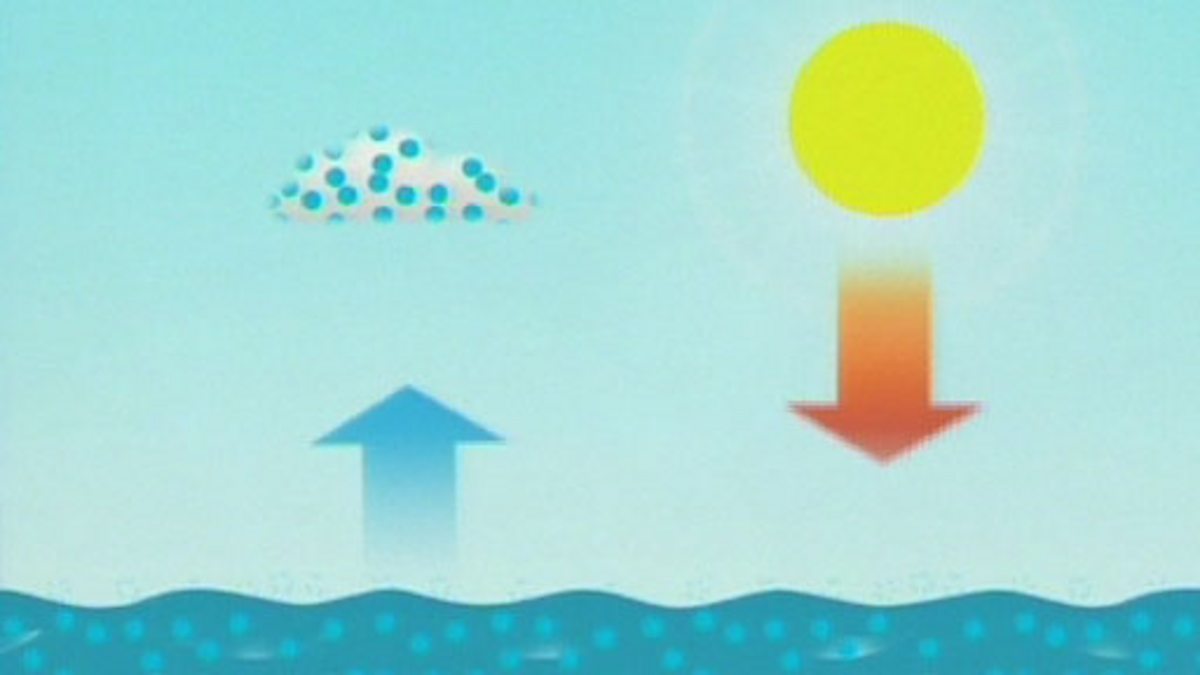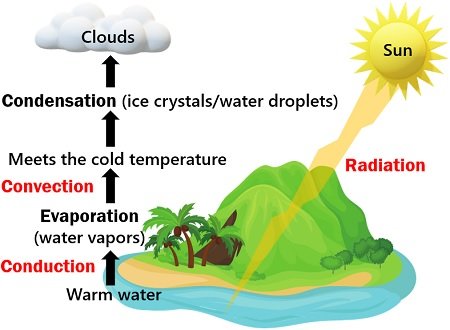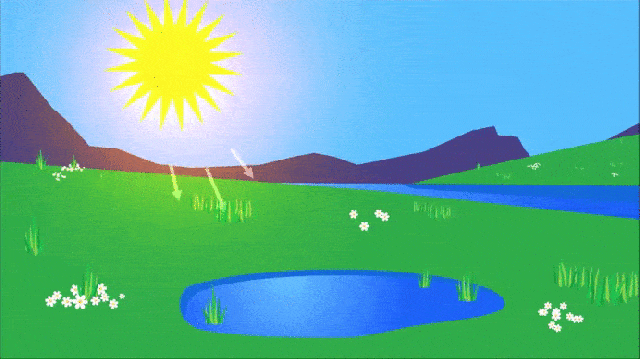Overview
Evaporation and the formation of clouds are essential processes in the Earth's water cycle, which plays a crucial role in regulating the distribution and availability of water across the planet. Let's take a closer look at each of these processes:
1. Evaporation:
Evaporation is the process by which water transforms from its liquid state to a vapor or gas state due to the absorption of energy, typically in the form of heat, from its surroundings. This energy breaks the bonds between water molecules, allowing them to escape into the air as water vapor. The primary source of energy for evaporation is solar radiation, as the Sun heats the Earth's surface, including oceans, lakes, rivers, and even moist soil.
Key points about evaporation:
- Evaporation rates depend on various factors, such as temperature, humidity, wind speed, and surface area of the water body.
- Warm and dry conditions generally lead to faster evaporation, while cooler temperatures and high humidity reduce the rate of evaporation.
- Evaporation is a cooling process; when water evaporates, it takes heat energy from its surroundings, leading to a cooling effect.
2. Formation of Clouds:
Clouds form through a process called condensation, which occurs when the air containing water vapor cools and reaches its saturation point. Saturation refers to the point at which the air is holding the maximum amount of water vapor it can at a particular temperature and pressure.
When the air cools, its capacity to hold water vapor decreases, causing the excess water vapor to condense into tiny water droplets or ice crystals around tiny particles known as cloud condensation nuclei (CCN). These CCNs can be dust, pollutants, or natural aerosols. Once condensation occurs, the water droplets or ice crystals clump together and form visible clouds in the sky.
Key points about cloud formation:
- Rising air is a common mechanism for cooling the air, leading to cloud formation. This can happen due to several processes, including:
a. Convective lifting: When the Sun heats the Earth's surface, the warm air rises, leading to the formation of cumulus clouds.
b. Orographic lifting: Air is forced to rise over mountains, leading to cloud formation on the windward side of the mountains.
c. Frontal lifting: When warm and cold air masses meet, the warmer, less dense air rises over the cooler, denser air, creating clouds.
- Clouds can consist of water droplets, ice crystals, or a combination of both, depending on the altitude and temperature.
It's important to note that while clouds are crucial for weather patterns and climate, they are temporary reservoirs for water. Eventually, clouds release their moisture in the form of precipitation, which includes rain, snow, sleet, or hail, thus completing the water cycle. The precipitation replenishes water sources on the Earth's surface, which then undergo evaporation again, continuing the cycle.
Evaporation
Evaporation is the process by which a liquid, such as water, changes into a gaseous state by absorbing heat energy from
its surroundings. When the sun's energy falls on the surface of water bodies like oceans, rivers, and lakes, it causes
the water molecules to gain energy and transform into water vapor.

This water vapor rises into the atmosphere, forming an invisible gas. It is an essential part of the Earth's water cycle
as it contributes to cloud formation and precipitation.

Formation of Clouds

Clouds are formed when the warm, moist air rises from the Earth's surface into the atmosphere, where the air pressure
decreases, and the temperature drops. As the air rises, it expands and cools, leading to the condensation of water
vapor into tiny water droplets or ice crystals around tiny particles in the atmosphere, like dust, pollen, or salt
particles. These droplets cluster together, forming clouds.

There are different types of clouds based on their appearance and altitude, such as cumulus, stratus, cirrus, and
nimbus clouds. Cumulus clouds are fluffy and white, often associated with fair weather. Stratus clouds are layered and
cover the sky like a blanket, often bringing overcast skies. Cirrus clouds are thin and wispy, indicating high-altitude
weather changes. Nimbus clouds are dark and heavy, producing rain, snow, or thunderstorms.





